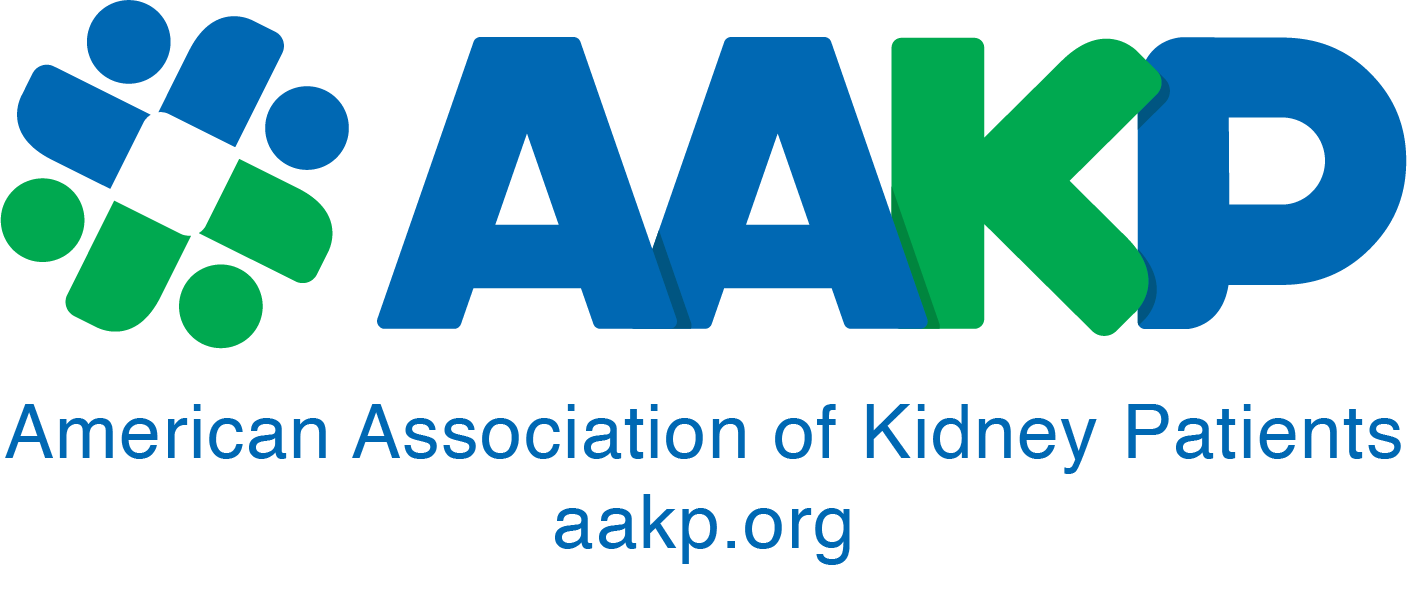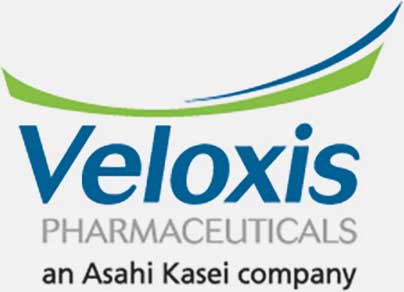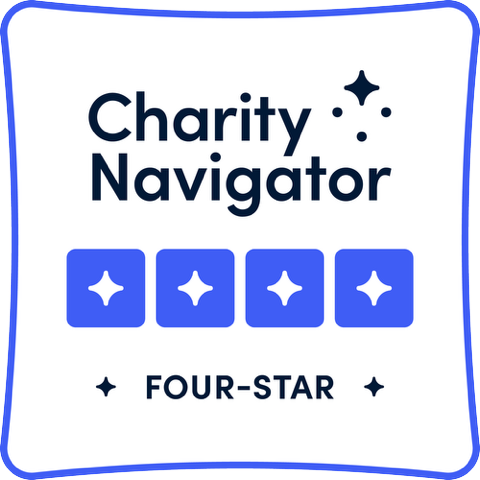
June 26, 2025
Chris Klomp
CMS Deputy Administrator and Director of the Center for Medicare
Centers for Medicare & Medicaid Services
U.S. Department of Health and Human Services
7500 Security Boulevard
Baltimore, MD 212440-1850
Dear Deputy Administrator Klomp:
Thank you for this opportunity to comment on the draft guidance for the third cycle of the Medicare Drug Price Negotiation Program. Since passage of the Inflation Reduction Act, we have worked collaboratively as organizations representing patients and people with disabilities to amplify the perspectives of those with lived experience in the implementation of the Medicare Drug Price Negotiation Program. Our comments focus on the agency’s approach to patient engagement — particularly in decisions related to clinical effectiveness, unmet medical need, therapeutic alternatives — as well as the agency’s use of value assessments.
We appreciate CMS’ ongoing efforts to build a public engagement strategy over the first two cycles and are encouraged that the process will continue to solicit input from patients and people with disabilities. However, we are concerned that the strategy outlined in the new guidance remains limited in scope. It lacks detail on how insights gathered from engagement events will be used and does not provide for the kind of continuous, substantive engagement necessary to ensure that patient voices are not only heard but meaningfully integrated into the process.
We are also concerned that the new guidance does not reflect statutory limitations on the use of quality-adjusted life years (QALYs) and similar measures under the Affordable Care Act — particularly given the revised approach proposed for IPAY 2028 that would no longer require submitters to clarify whether such measures are included in their evidence.
Therefore, we are pleased to share the following recommendations:
• CMS should avoid one-size fits all value metrics.
• CMS should develop a formalized process to ensure continuous, robust engagement of patients and people with disabilities at multiple levels.
• Using patient insights, CMS should clearly communicate how it intends to use the input it receives, and how that input is reflected in the final negotiated prices.
• CMS should solicit input from a variety of patients who rely on the treatments in question, including those in rural areas to ensure representation of the diversity of the patients and communities affected by the topic.
• CMS should ensure that opportunities for patient engagement are accessible.
• To gauge both successes and challenges, CMS should establish a structured process for continuous review and assessment of its engagement strategy.
CMS should avoid one-size-fits-all value metrics.
It is now widely recognized that traditional methods and metrics of value assessment such as the QALY have significant shortcomings. This has led to well-intentioned development of other measures and approaches that developers assert to be nondiscriminatory and more patient-centered. However, each approach comes with tradeoffs, need for improvement, and inherent methodological weaknesses. No patient is average, and no measure of value should assume so.
Prior law, including the Affordable Care Act, bars use of QALYs and similar measures
In this guidance, CMS reiterates its commitment to “learning from, collaborating with, and engaging the public, including patients, consumer advocates, health and data experts, and pharmaceutical supply chain entities in the policy-making process.” The agency also expresses support for collecting real-world data and engaging patients related to its work to identify therapeutic alternatives.
However, we are concerned by the guidance’s narrow framing of statutory limitations. CMS states that it will “review cost-effectiveness measures used in studies relevant to a selected drug to determine whether the measure used is permitted in accordance with section 1194(e)(2), as well as with section 1182(e) of Title XI of the Act.” This reference to the IRA’s statutory language bars CMS from using “information that treats extending the life of individuals in these populations as of lower value.” However, it leaves out the broader protections established by the Affordable Care Act (ACA), which prohibits the use of the QALY and similar measures that “discount the value of a life because of an individual’s disability.”
Additionally, we are concerned by CMS’ decision to remove a prior transparency requirement that asked those who submit evidence to disclose whether their studies used cost-effectiveness measures that could devalue the lives of specific populations, and to briefly explain how their data avoided such biases. CMS explains that it removed this requirement because not all respondents were familiar with cost-effectiveness methodology. However, the removal of this safeguard — without offering an alternative mechanism for transparency — undermines meaningful oversight. CMS’ review of submitted measures is not a substitute for public accountability and does not ensure compliance with the anti-discrimination protections outlined in either the IRA or the ACA.
Recent regulatory developments further underscore these risks. While we appreciate the guidance’s reaffirmed commitment to not using QALYs in the Negotiation Program, we remind the agency that value assessments can still be discriminatory even if they do not rely on QALYs. The final rules implementing Section 504 of the Rehabilitation Act1 and Section 1557 of the ACA2 both acknowledge the potential for value assessments to discriminate. In fact, the agency interpreted the Section 504 rule as “broader than Section 1182 of the Affordable Care Act, prohibits practices prohibited by section 1182 (where they are used to deny or afford an unequal opportunity to qualified individuals with disabilities with respect to the eligibility or referral for, or provision or withdrawal of an aid, benefit, or service) and prohibits other instances of discriminatory value assessment.”
The aim of these statutory and regulatory protections is not to encourage workarounds, but to ensure that measures used in federal programs do not disadvantage individuals based on age, disability, or health status. As discussed on the Senate floor, the spirit of these provisions was to protect vulnerable populations from policies that “set national practice standards or coverage restrictions” and to ensure that research used in such decisions is grounded in meaningful clinical outcomes.3 Without transparency and clear limitations around value assessment methods, there is a heightened risk that discriminatory methodologies — like QALYs or similar tools — will enter the negotiation process without detection or accountability.
The data used to value health care may be discriminatory or fail to represent real-world experiences of patients and people with disabilities.
We urge CMS to not only comply with current law, but also to consider whether the evidence used in its decision-making was developed in a manner that reliably represents the population of patients and people with disabilities impacted. Value assessments are only as good as the data used in their development. Therefore, we urge the agency to consider the following factors:
• Health utilities: Also known as Health State Utility Value (HSUV), they mark the health-related quality of life (HrQOL) of a patient with a specific disease. A numeric valuation is applied to a health state based on preference of being in that state relative to perfect health, assigning a number between 0 and 1 to various conditions a person’s health could be in (often called “health states” in which 0=death and 1=optimal health). They are typically derived from surveys asking how much, on average, someone prefers one health state compared to another. Health states typically represent degrees of impairment (not the disability or condition) such as active disease, response, remission, or mild, moderate and severe. Shortcomings include:
o Survey data relies on average perspectives of quality of life in a health state, which are biased, inaccurate and almost never replicable. For example, there is significant research on the bias against disability among the public4 and among providers5.
o The identified health states are typically not disease or condition specific, often surveying health from lens of mild, moderate or severe (such as the EQ- 5D6) and only accounting for health improvements that move between these broad states. Only large health improvements, i.e. HrQOL, count.
o Health utilities typically give a lower value to people living below optimal health. For example, extending the life for person living at a .5 is worth half of a person at a 1.
• Disability weights: Disability weights quantify health losses relating to non-fatal outcomes, expressed as years lived with disability (YLD). They typically have a value between 0 (equivalent to full health) and 1 (equivalent to death). For example, living 10 years with a 10 percent reduction in HRQoL is a disability weight of 0.10 – equal to losing one full year of good health (e.g., by dying one year before the life expectancy). Severity of condition (morbidity) and its death rate (mortality) are expressed as the number of healthy life years lost.
Shortcomings include:
o Disability weights are elicited by surveys, often of participants that do not have experience in the studied health state. Surveys are subject to bias against disability.
o Disability weights from different studies are often not comparable, coming from different countries or populations with differing perceptions of disease and disability.
o Assuming same weights to different aspects of quality of life as representative of all people risks being applicable to none.6 Triathletes may highly weigh physical function. Academics may weigh mental acuity.
• Health outcomes data: Cost effectiveness analysis requires data on health outcomes to measure cost of gaining health. A product’s “value” combines clinical effectiveness (impact of intervention on select health outcomes) and economic value (impact of intervention on healthcare resource use and costs). Shortcomings include:
o Patient-centered outcomes and societal value are often ignored. For example, methods may not incorporate data on economic or social consequences such as loss of ability to work or caregiver effects.
o Reliance on average estimates based on generic survey data obscures important differences in clinical needs and preferences, particularly complex diseases and those from underrepresented communities.7
• Real-World Implications: New methodologies for cost effectiveness analysis are abundant but untested. While recognition of flaws inherent in historic methods for assessing treatment value is driving innovation, literature on almost every method underscores need for extensive detailed data on patients’ risk profiles, co-existing conditions, and other relevant factors currently lacking and challenging to obtain. Investment in data is needed.
Every value assessment measure has tradeoffs.
There has been longstanding protection against the use of discriminatory value assessment tools in statute. Therefore, we are concerned that CMS’ draft guidance explicitly expressed interest in using alternative approaches as part of drug price negotiations. Every cost effectiveness measure has tradeoffs between conditions advantaged and disadvantaged:
• Quality-adjusted life year (QALY): Less value to life-extending treatments among patients whose baseline health-related quality of life is low, particularly people living with disabilities. More value to treatments achieving maximum quality of life.
• Equal value of life year gained (evLYG): Less value to treatments improving quality of life in extended life years. Same value as QALYs for treatments that do not extend life years regardless of quality-of-life improvements. More value to treatments extending life years.
• Generalized Cost Effectiveness Analysis (GCEA): Less value to treatments for common conditions to manage symptoms. More value to treatments for severe and disabling conditions.
• Generalized risk-adjusted cost effectiveness (GRACE): Less value to treatments for common conditions to manage symptoms. More value to treatments for severe and disabling conditions.
• Disability adjusted life year (DALY): Less value to treatments for people with disabilities due to focus on life years lost. More value to conditions leading to an early death without treatment.
• Health years in total (HYT): Less value to treatments that improve quality of life without increasing life expectancy. More value to treatments that extend life.
• Life years gained (LYG): Less value to treatments for patients with fewer years left to live (e.g., older adults or those with disabling conditions) and for largely non-fatal conditions (e.g., blindness, depression, rheumatoid arthritis. More value to treatments extending life.
Recommendation: We urge CMS to avoid use of one-size-fits-all value metrics, like the QALY or evLYG, as part of its decision-making, consistent with current Medicare law and regulations governing nondiscrimination. CMS should also identify and be transparent about the types and sources of research, data, and assessments considered in its decision-making process — including requiring disclosure of whether submitted evidence relies on cost-effectiveness measures such as QALYs, evLYG, or similar metrics. In addition, CMS should ensure it and other entities are exercising adequate oversight over the Medicare Drug Price Negotiation Program to ensure decisions do not rely on data from studies relying on one-size fits all metrics, like the QALY or evLYG.
Engage Patients and People with Disabilities.
We urge the Centers for Medicare & Medicaid Services (CMS) to strengthen and formalize its patient engagement process beyond written comment periods and one-time public events. Drawing on robust frameworks from leading organizations including PCORI, National Health Council (NHC), the PATIENTS Program at the University of Maryland, the Center for Innovation and Value Research (CIVR) (formerly known as the Innovation and Value Initiative (IVI)), and AcademyHealth, we want to reemphasize the following recommendations through which CMS would prioritize authentically involving patients and people with disabilities in agency decisions. We urge CMS to incorporate these best practices to foster meaningful dialogue with patients, caregivers, and people with disabilities across the agency. The insights from their lived experience will allow CMS to ensure advancement of policies and practices that improve health care value and patient outcomes.
Our recommendations for strengthening CMS’ patient engagement strategies are grounded in the expertise of organizations dedicated to improving health care value through meaningful engagement with patients and individuals with disabilities. These organizations have developed substantial recommendations to foster and guide patient engagement across the health care sector, emphasizing the crucial role of meaningful and authentic patient and caregiver engagement in research processes.
While we appreciate that CMS has outlined a public engagement strategy in the guidance, past experiences show room for improvement in execution and clarity. In response to CMS’ 2023 listening sessions on the Medicare Drug Price Negotiation Program, NHC convened a roundtable discussion to provide a platform for the patient community to share their experience engaging with the agency.8 Stakeholders outlined valuable insights gleaned from these sessions, which can contribute to shaping CMS’ broader patient engagement strategies. The PATIENTS Program at the University of Maryland School of Pharmacy adopted a similar approach by hosting a Town Hall, bringing together stakeholders to gather insights and recommendations.9 Their aim was to ensure that patient perspectives are being represented in the agency’s decision-making. There is still room and appetite for CMS to incorporate some of these recommendations into its processes.
Furthermore, the PCORI-developed Foundational Expectations for Partnerships10 and CIVR’s Economic Impacts Framework11 also informed our recommendations. PCORI’s six expectations serve as a framework to guide meaningful, effective, and sustainable engagement to advance patient-centered comparative clinical effectiveness research (CER). Meanwhile, CIVR’s framework, along with the principles used to develop it, encourages partnerships between patients, caregivers, and researchers to broaden the understanding and measurement of the six main economic impacts for patients.
CMS should work with an advisory group of experts from organizations representing people with chronic conditions and disabilities to enhance the existing engagement strategy and ensure continuous, robust engagement of patients and people with disabilities at multiple levels.
There is broad consensus among policymakers and leaders in the field of patient-centered outcomes research that robust engagement of people with lived experience is crucial. As part of NHC’s vision for improving CMS’ patient engagement over the next five years, one of three key improvements proposed is inclusion of patient perspectives at every stage of the decision-making process. To achieve this objective, both NHC and the PATIENTS Program urge CMS to establish partnerships with the patient community and formalize a process to create multiple touchpoints with people experiencing the disease or illness being studied. This aligns with PCORI’s foundational expectations for partnerships, which emphasizes the importance of initiating touchpoints early, even during planning stages of a study.
Additionally, CIVR highlights that continuous partnerships provide valuable context from individuals’ lived experiences to shape research priorities and NHC recommends CMS develop methods for incorporating this patient experience data into its program implementation. The experts participating in the advisory group should include those with experience engaging patients and people with disabilities throughout the life cycle of chronic conditions and disabilities to elicit information about the range of burdens and outcomes that matter most to them, as well as the differences among subpopulations.
Recommendation: Based on this strong consensus and alignment of goals, we recommend that CMS develop a formalized engagement process in consultation with engaged partners in the patient and disability communities that have expertise engaging people with lived experience related to their experiences with treatment. This process should not only ensure that the agency is actively engaging early and often with patient stakeholders but also guarantee ongoing engagement, fostering sustainable partnerships and building trustworthy relationships for future endeavors.
Using patient insights, CMS should clearly communicate how it intends to use the input it receives, and how that input is reflected in the final negotiated prices.
While CMS hosts public engagement events and asks stakeholders to submit data on selected drugs, the agency has not clearly explained how input will be used or how it will inform CMS’ eventual conclusions. The process of collecting stakeholder input is critical, but equally important is ensuring that the information is meaningfully incorporated into decision-making.
This issue was highlighted during NHC’s roundtable, where numerous stakeholders expressed feeling underprepared by CMS for the 2023 listening sessions, which limited their ability to meaningfully participate. They suggested that CMS could have better communicated the purpose of the information it is seeking, and how it is being used in determining prices for selected drugs. We appreciate that the agency provided more detailed guidance ahead of the 2025 roundtable events to help speakers prepare. However, we emphasize that this level of clarity should be applied more broadly to CMS’s overall engagement strategy, with a clear articulation of how patient input is being incorporated into the agency’s decision-making processes.
Recommendation: We encourage a cyclical approach, wherein patient engagement helps CMS communicate how it intends to use the information submitted by stakeholders on selected drugs and therapeutic alternatives. It is critical that this information is communicated to stakeholders to ensure they are prepared to provide appropriate feedback at public engagement events. CMS should be very explicit and transparent about the information it is seeking from patients and people with disabilities and how that input will influence decisions.
CMS should ensure that opportunities for patient engagement are accessible.
CIVR and PCORI emphasize the significance of allocating dedicated funds and resources to support and compensate patient engagement. We concur with this perspective and recommend CMS take responsibility for compensating patient participants to ensure that their patient engagement opportunities are accessible. Most of these individuals have to take time off from work and routine caregiving duties to lend their expertise. They should be compensated as any expert would be for participating in such a process. Patient and disability advocates have echoed these sentiments, urging CMS to allocate resources such as financial assistance, accessible materials, disability-friendly meeting arrangements, and extended input and comment periods.
It will also be critical that CMS provide accessible materials, emphasizing the use of plain language and health literacy principles to ensure patient understanding and inclusivity. They also advocate for diverse engagement approaches, recognizing that online-only methods may not be accessible to everyone. Notably, NHC recommends that Congress provide this support, along with funding and oversight, to strengthen CMS’ engagement efforts.
Additionally, NHC recommends that CMS enhance its own accessibility. Communication with executive branch agencies can often be challenging due to bureaucracy and the need for institutional knowledge to communicate effectively. Streamlining the process for initiating dialogue, such as by creating an ombudsman or a clearly identified point of contact, is essential for effective engagement.
Recommendation: While CMS has outlined virtual engagement events, further action is needed to ensure true accessibility and inclusion for all patient and disability communities. CMS should create an ombudsman for engagement of stakeholders from the patient and disability communities, dedicate funds and resources to support and compensate patient engagement, and ensure accessibility through use of plain language materials and by providing opportunities for engagement through written comments, in- person meetings and online events.
To gauge both successes and challenges, CMS should establish a structured process for continuous review and assessment of its stakeholder engagement strategy.
PCORI’s final expectation for patient engagement underscores the importance of gathering input and feedback throughout projects to pinpoint areas of success and areas for improvement, enabling adjustments in future engagement strategies. PCORI emphasizes that continuous learning is essential for enhancing engagement strategies, allowing researchers to assess whether engagement is effective, equitable, and as intended. The PATIENTS Program echoes PCORI’s expectation, advocating for a third-party evaluation of patient and stakeholder engagement to ensure transparency and accountability.
Recommendation: CMS should commit to continuous learning, refining its patient engagement strategy and promoting health equity as part of a structured assessment of what works and what does not work, in collaboration with engaged patients and people with disabilities.
Conclusion
We urge CMS to continue refining its implementation of the Medicare Drug Price Negotiation Program to ensure alignment with existing law governing the use of value assessments and to strengthen meaningful, continuous engagement with patients and people with disabilities. While we appreciate the steps CMS has taken to formalize an engagement strategy, further action is needed to ensure that patient voices are not only heard but integrated into decision-making, and that the agency relies on high-quality, representative sources of evidence. We appreciate CMS’ consideration of our recommendations, offering a holistic approach to improving patient engagement across the agency. Embracing these recommendations will not only strengthen CMS’ relationship with stakeholders but also pave the way for more effective delivery of quality health care, ultimately benefiting patients and the health care system.
Sincerely,
Alliance for Aging Research
Alliance for Patient Access
ALS Association
American Association of Kidney Patients
American Association on Health and Disability
Axis Advocates
Blue Ridge Independent Living Center
Caring Ambassadors Program, Inc.
Color of Gastrointestinal Illnesses
Cystic Fibrosis Research Institute
Depression and Bipolar Support Alliance
Diabetes Leadership Council
Diabetes Patient Advocacy Coalition
Disability Policy Consortium
Disability Rights Education and Defense Fund (DREDF)
Epilepsy Foundation of America
GO2 for Lung Cancer
Headache & Migraine Policy Forum
Health Hats
HealthHIV
Healthy Men Inc.
Infusion Access Foundation
Lakeshore Foundation
Lupus and Allied Diseases Association, Inc.
National Hispanic Medical Association (NHMA)
National Infusion Center Association
National Minority Quality Forum
Not Dead Yet
Partnership to Improve Patient Care
Sickle Cell Foundation of Georgia, Inc.
Statewide Independent Living Council of IL
The Bonnell Foundation: Living with cystic fibrosis
United Cerebral Palsy
WeMatter Organization
- HHS, “Nondiscrimination on the Basis of Disability in Programs or Activities Receiving Federal Financial Assistance,” May 9, 2024, https://www.federalregister.gov/documents/2024/05/09/2024- 09237/nondiscrimination-on-the-basis-of-disability-in-programs-or-activities-receiving-federal-financial ↩︎
- CMS, “Nondiscrimination in Health Programs and Activities,” May 6, 2024, https://www.federalregister.gov/documents/2024/05/06/2024-08711/nondiscrimination-in-health- programs-and-activities ↩︎
- Colloquy by Senators Baucus, Enzi, Conrad, Hatch, Carper and Menendez. “Comparative Effectiveness Research Funds.” Congressional Record 155:24 (February 6, 2009) p. S. 1796. ↩︎
- Ari Ne’eman et. al., “Identifying And Exploring Bias In Public Opinion On Scarce Resource Allocation During The COVID-19 Pandemic,” Health Affairs Vol. 41 No. 10 (October, 2022), https://www.healthaffairs.org/doi/10.1377/hlthaff.2022.00504 ↩︎
- Lisa I. Iezzoni et. al., “Physicians’ Perceptions of People With Disability and Their Health Care,” Health Affairs
Vol. 40 No. 2 (February, 2021), https://www.healthaffairs.org/doi/full/10.1377/hlthaff.2020.01452 ↩︎ - Anirban Basu & David Meltzer, “Value of Information on Preference Heterogeneity and Individualized Care,”
Medical Decision Making Vol. 27 No. 2 (March-April 2027), https://pubmed.ncbi.nlm.nih.gov/17409362/ ↩︎ - Michael J DiStefano et. al., “Alternative approaches to measuring value: an update on innovative methods in the context of the United States Medicare drug price negotiation program,” Expert Review of Pharmacoeconomics & Outcomes Research Vol. 24 No. 2 (February 2024), https://pubmed.ncbi.nlm.nih.gov/37961908/ ↩︎
- NHC, “Amplifying the Patient Voice: Roundtable and Recommendations on CMS Patient Engagement,” published March 2024, https://nationalhealthcouncil.org/wp-content/uploads/2024/03/Amplifying-the- Patient-Voice-Roundtable-and-Recommendations-on-CMS-Patient-Engagement.pdf ↩︎
- The PATIENTS Program at the University of Maryland School of Pharmacy, “PATIENTS Professors Town Hall: Recommendations for the CMS Drug Price Negotiation Program Final Report,” published July 12, 2023, https://www.pharmacy.umaryland.edu/media/SOP/wwwpharmacyumarylandedu/programs/PATIENTS/p df/Patient-driven-recommendations-for-the-Medicare-Drug-Price-Negotiation-Program.pdf ↩︎
- PCORI, “Engagement in Research: Foundational Expectations for Partnerships,” updated February 2024, https://www.pcori.org/sites/default/files/PCORI-Engagement-in-Research-Foundational-Expectations-for- Partnerships.pdf ↩︎
- IVI and AcademyHealth, “A Research Framework to Understand the Full Range of Economic Impacts on Patients and Caregivers,” published May 2023, https://thevalueinitiative.org/wp- content/uploads/2023/06/05-2023-Economic-Impacts-Framework-Report_FINAL.pdf ↩︎
100 M Street, SE | Suite 750 | Washington, DC 20003 | PIPCpatients.org























